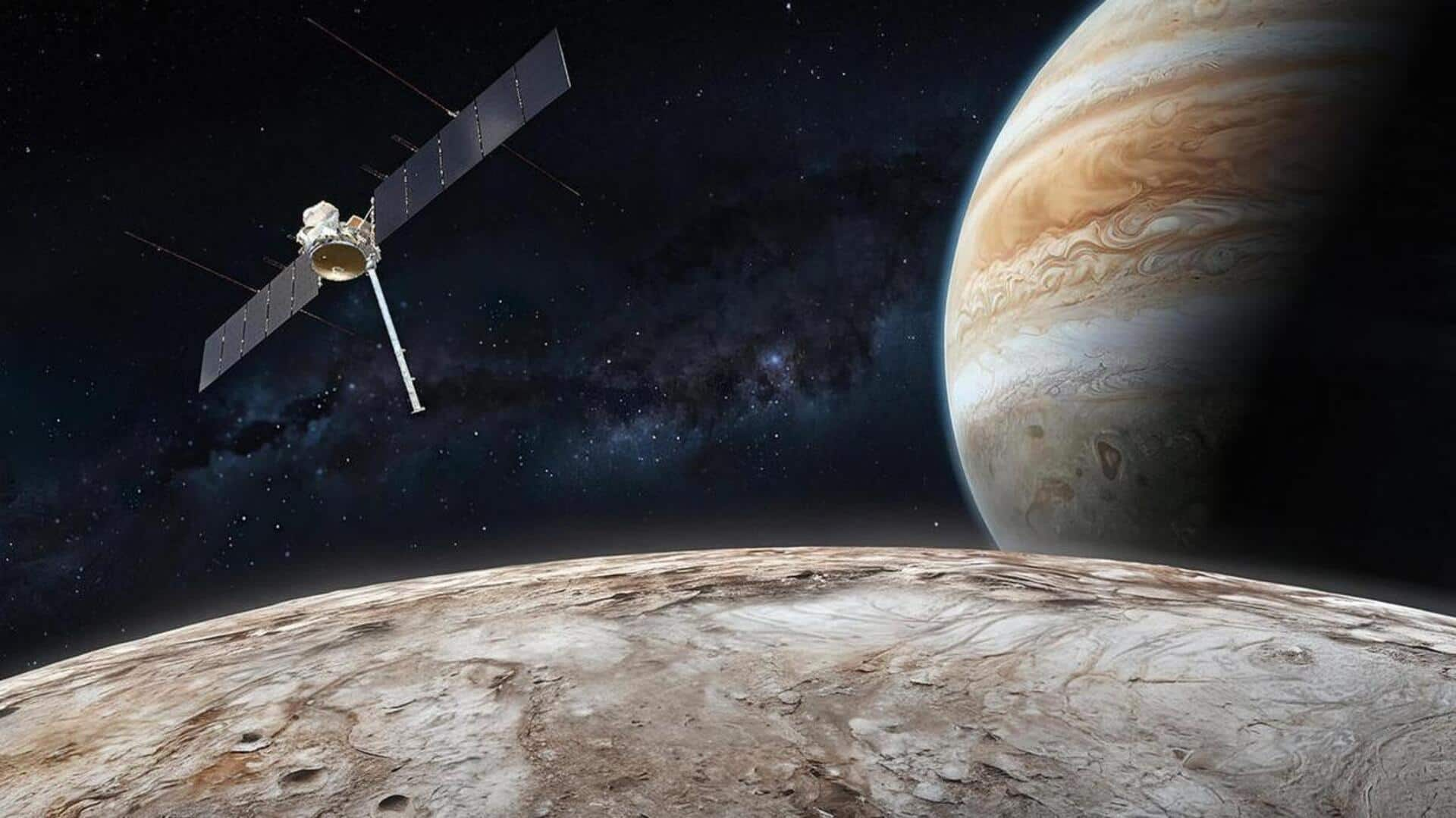
NASA's $5.2B probe begins journey to Jupiter's icy moon Europa
What's the story
NASA has successfully launched a $5.2 billion probe, the Europa Clipper, on a 1.8 billion mile journey to Jupiter and its icy moon Europa. The mission was launched from pad 39A at the Kennedy Space Center in Florida, aboard SpaceX's Falcon Heavy rocket. The primary objective of this expedition is to investigate the potential habitability of Europa's sub-surface ocean, believed to be warmer than its frigid surface due to Jupiter's gravitational influence.
Mission details
Europa Clipper to orbit Jupiter by 2030
The Europa Clipper is slated to reach Jupiter's orbit in April 2030 and perform close flybys of Europa. Previous missions and Earth-based studies indicate that a huge salt-water ocean lies under the moon's frozen crust, possibly offering a habitable environment. The probe will perform 49 flybys of the icy moon, some as low as 26km above its surface. The first of these flybys will take place in early 2031.
Life search
Mission aims to uncover potential for life on Europa
Project scientist Robert Pappalardo explained that the mission's goal is to determine if Europa could support simple life in its deep ocean, beneath the icy layer. "We want to understand whether Europa has the key ingredients to support life in its ocean, the right chemical elements and an energy source for life," he said. The existence of microbial life in that ocean remains a mystery this mission hopes to unravel.
Delayed departure
Launch delayed due to hurricane and technical issues
The Europa Clipper was supposed to launch last week, but it was pushed back after Hurricane Milton swept across Cape Canaveral. Then, a further one-day delay was introduced to fix a technical issue with the rocket. However, despite all this, the Falcon Heavy's 27 first stage engines ignited as scheduled at 12:06pm EDT (9:36pm IST), pushing the rocket away from pad 39A with over five million pounds of thrust.
Rocket performance
SpaceX's Falcon Heavy propels probe toward Jupiter
Unlike typical SpaceX launches, this mission didn't allow for the recovery of first stage boosters due to the need for maximum performance. "Falcon Heavy is giving Europa Clipper its all, sending the spacecraft to the farthest destination we've ever sent, which means the mission requires maximum performance," said Julianna Scheiman, SpaceX Director of NASA science missions. She couldn't think of a better mission to sacrifice boosters for where we might have a chance to discover life in our solar system.
Path and hurdles
Europa Clipper's journey and challenges
The Europa Clipper will first fly past Mars on March 1, 2025, using the red planet's gravity to boost its speed. It will then return toward Earth for another gravity-assist flyby in December 2026, finally setting course for Jupiter. The spacecraft is designed to withstand extreme radiation while making close flybys of Europa. Pappalardo highlighted that Jupiter's powerful magnetic field "acts like a giant particle accelerator at Europa," posing significant challenges to the mission.